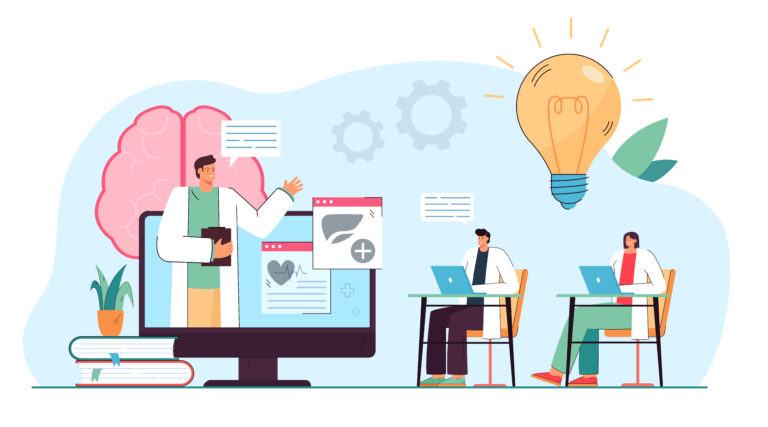Just six years ago, dated workflows left 30% of hospitals operating with negative margins. Although healthcare costs continue to rise, these challenges open bright opportunities for organizations to revise how their work is done.
Business process management (BPM) tools — often packaged as BPM software (BPMS) — pivot your hidden inefficiencies into daily operations boosts. Let’s unpack how transparency gives your team chances to tweak all your workflows.
What can BPM software do to improve healthcare?
Organizations across all of healthcare interact with many people and systems. Large or elaborate processes cross multiple departments — within and outside of your organization — and obscure data that highlights:
- Wasteful use of resources,
- Inefficient or redundant practices,
- Error-prone routines, and
- Progress chokepoints.
Business process management helps you find and reorient every interaction for consistency in all your daily workflows. In other words, BPM lets you dial into key areas to boost your productivity.
Centralize
To start, BPM software introduces a central “command center” for all your processes. Disorganization fades when you unite processes, robotics, and case management under one view. Teams spend less time searching for the information they need to deliver care faster.
Standardize
Your central point-of-view welcomes you to iron inconsistency from your processes. Healthcare runs best when your teams complete work the same way every time. BPMS revisits your ad hoc solutions and legacy systems to strip down to the essentials, then mirrors these lean processes across your organization for best practices.
Automate
Scale your ideal patient care and back-office administration using BPMS to manage your automation. Humans gain time for smarter, faster decision-making while bots carry some of your heaviest workloads. Many teams skyrocket their efficiency from hidden information that only automated helpers can see.
Monitor and Track
Ongoing changes become less of a burden with real-time information in BPM tools. You can leverage your new visibility to track and prioritize your task pipeline, to make reimbursement deadlines and other expectations easy to reach. By design, BPMS data forms audit trails to make your teams more proactive and preventative — for both your patient-facing and administration duties.
Together, these focal points allow for complete transparency to improve your care quality and slash your operating costs in four notable ways:
- Personalized, light-speed responses to patients and staff,
- Flexible workflow design to evolve with your needs,
- Baked-in compliance with required regulations, and
- Frictionless service touchpoints in onboarding and beyond.
1. Rapid, personalized communications
Communication in healthcare often becomes a fractured experience. For instance, your team may track requests for patient records and insurance reimbursements via email, phone, online chats, and in-person. Redundant requests and follow-ups often cause duplicate paperwork and stagger your processing times.
BPM software coordinates every interaction in one digital space to view progress at a glance. All requests and responses are tracked for a full personal history — and instant context to accurately meet patient and staff needs.
For any goal, all conversations are fast, fluid, and pointed to foster a simple one-on-one patient experience.
2. Flexible workflow design
Every organization has routine admin tasks stealing time and focus from direct patient care. Less attention on complex patient issues leaves your care quality to the whims of bureaucracy.
StoneGate Senior Living faced paperwork bloat, shuttling paper applications between departments by foot — ultimately missing Medicaid reimbursement deadlines. They no longer front the billing gap for their patients because BPMS gives them:
- Digital document attachment and central all-access storage,
- Auto-flagged applications for incomplete or missing info, and
- Rapid approval and handoff via online forms,
… helping them meet due dates every time.
In addition to forms request and approval, you’ll find opportunities to automate:
- Medical chart requests,
- Audit management,
- Pharmacy recall notices,
- Central supply requests,
- Pharmacy drug tracing,
- Item exception requests, and
- New product evaluation
Each task is handled quickly, monitored at each step, all with minimal errors and delays.
3. Leverage baked-in compliance
Modern healthcare privacy and security standards are rapidly changing — with unique policies per region, state, and country. HIPAA and the Affordable Healthcare Act (ACA) are among many legal, financial, and industry-specific regulations that blindsight teams every year.
To bypass crunchtime during audit season, BPM software offers digital “paper trails” of all your activities. By design, you can leverage real-time reporting tools in various formats to gather, dissect, and share snapshots of your operations.
Once integrated, BPMS gives you better record management to comply with any regulatory body.
4. Reduce friction in your service touchpoints
Patient-facing touchpoints often drag since teams are locked into handling all their needs themselves. Documents, payments, and even simple questions all stack and get gridlocked in human hands.
Instead, BPMS can show you where patients can be best served by bots or self-service portals. Onboarding, patient records requests, payment processing, and fielding FAQs can all be helped with digital access points. Even staff can benefit from automation with self-service leave requests.
Where limited staffing throttles your work, digital services allow you to assist anytime, anywhere — even after business hours.
Using BPMS to elevate the healthcare experience
In summary, BPM software allows your healthcare teams to leverage all available resources in the most efficient areas.
As you centralize, standardize, automate, and monitor your daily workflows, your care services become transparent. Any opportunity to improve is more attainable with BPMS — whether in insurance, medical services, or elsewhere in the healthcare experience.





